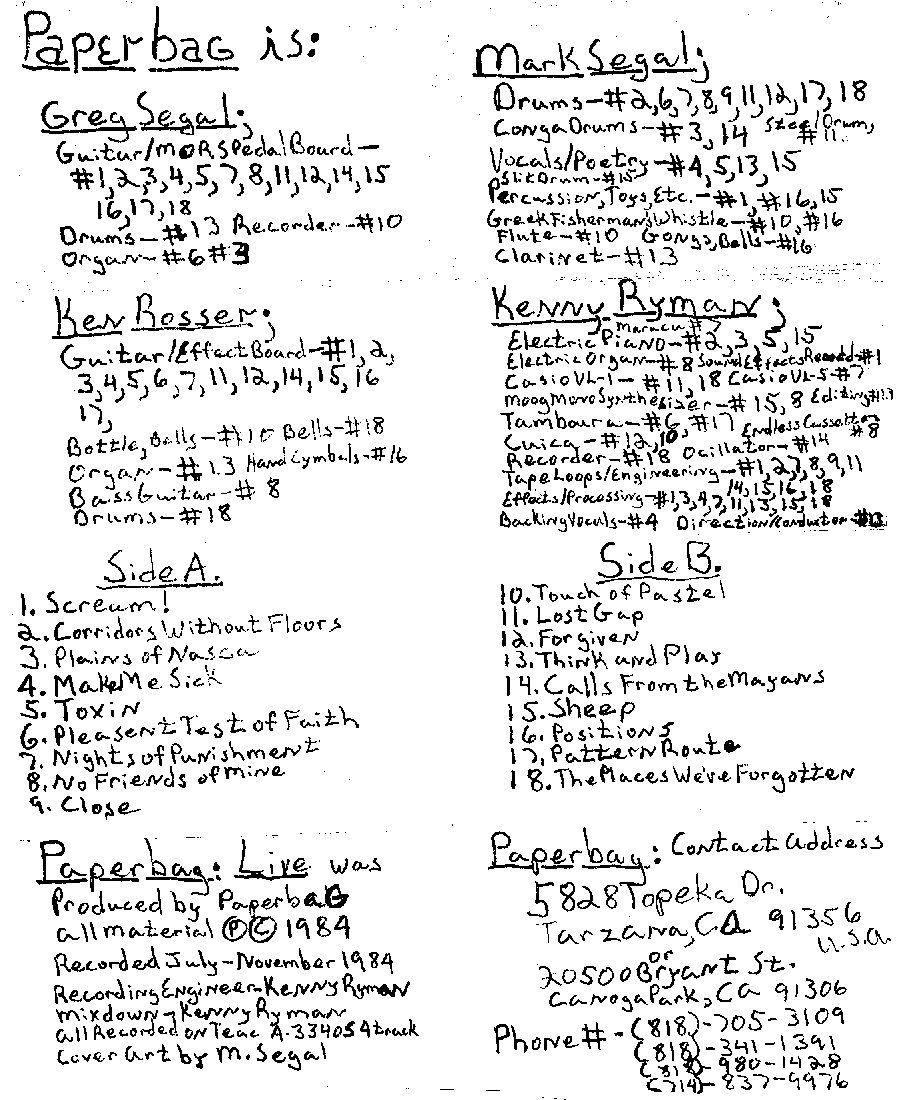

A few comments:
We were recording to Kenny's 4-track reel-to-reel on a weekly basis by this point. The mixes were pretty much set live, and usually only minor adjustments were necessary after. This was a huge improvement over the earlier tapes, many of which were done on mono cassette.
The variety of instruments listed for each member here really illustrates one of the things I liked best about the band, especially in the studio: we really did try all sorts of things, always in search of new textures and new sound combinations. In terms of sheer instrumentation I don't think anyone took this to greater extremes than Kenny, who would basically play anything. M., who had started it all with his toy collection and percussion tables, ended up trailing Kenny, counting the number of instruments (and their combined weight). M. and Kenny actually dragged most of this around live, hundreds of pounds of equipment. I gradually whittled away the extras, whereas anything that Kenny brought into the mix usually stayed, same with M. unless the stage didn't permit it (and even then....). Although I did do things like bring a cap gun to a gig and fire it off in the air (without telling anyone about it first), and bring out a violin onstage after having played for about a week, I mostly tried to get as many sounds out of my guitar as possible.
The MORS pedalboard is an acronym for Munsen/Olsen/Rutter/Segal. Keith Munsen is an old friend of the Segal brothers who also happened to be an electrician. When Mark Olsen, who had built my first couple of pedalboards, decided he was no longer going to be active in any of his old habits, Keith was recruited to help me get the power supply happening. The system was cumbersome and complicated and probably worked very well for Olsen, who was an electronics genius. I am not, and so I did eventually devise my boards from scratch after this, so that if anything went wrong I could handle it myself. Vincent Rutter and I built the actual body of the board, which was a double decker made out of inch-thick plywood- about 3' x 2.5'. Two shelves (one elevated), packed with every gadget I could find. I spent many, many hours experimenting to get the right order for the signal chain, all of which had to be decided before the effects were screwed down and wired to the main power supply. Humphrey, who owned and operated the studio PB rehearsed and recorded in ('83 through '86), used to call it "the nuclear power plant". It did have a lot glowing lights on it. I should have called it "the back killer" because it weighed about 70 lbs. (This still didn't beat my amp at the time which weighed in at around 115- an early Fender Twin Reverb with two 200W EVs. Ouch.)